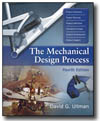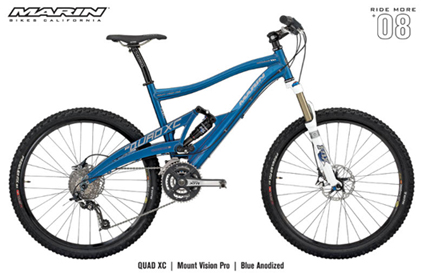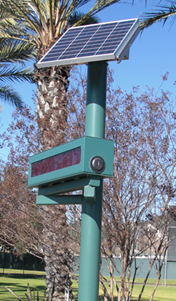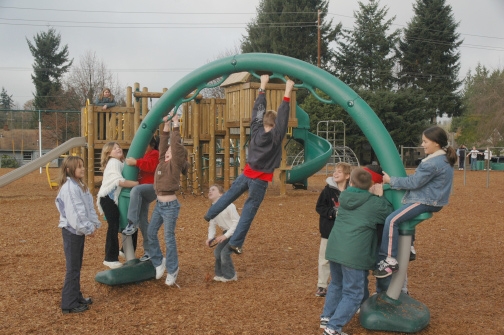 |  The Mechanical Design Process, 4/e David G. Ullman,
Oregon State University
Case StudiesCase Studies for The Mechanical Design Process
A series of case studies are being developed to support the material in The Mechanical Design Process. Each of these was developed in cooperation with a company to show how they make use of best practices. Click on the title below to download each case study (a pdf file).
 <a onClick="window.open('/olcweb/cgi/pluginpop.cgi?it=jpg::::/sites/dl/free/0072975741/677163/marin.jpg','popWin', 'width=NaN,height=NaN,resizable,scrollbars');" href="#"><img valign="absmiddle" height="16" width="16" border="0" src="/olcweb/styles/shared/linkicons/image.gif"> (127.0K)</a> <a onClick="window.open('/olcweb/cgi/pluginpop.cgi?it=jpg::::/sites/dl/free/0072975741/677163/marin.jpg','popWin', 'width=NaN,height=NaN,resizable,scrollbars');" href="#"><img valign="absmiddle" height="16" width="16" border="0" src="/olcweb/styles/shared/linkicons/image.gif"> (127.0K)</a>
|  From Constraints to Components at Marin Bicycles (770.0K) From Constraints to Components at Marin Bicycles (770.0K)
This case study details the development of the Marin Mount Vision Pro mountain bicycle rear suspension. used a structured method that progressed from Constraints to Configurations to Connections to Components . This methodology helped them ensure that the final configuration met the needs. Each of the four steps is described here. This case study appears in Section 9.6 of the 4th edition of The Mechanical Design Process. |
 <a onClick="window.open('/olcweb/cgi/pluginpop.cgi?it=jpg::::/sites/dl/free/0072975741/677162/Sound_Devices.jpg','popWin', 'width=NaN,height=NaN,resizable,scrollbars');" href="#"><img valign="absmiddle" height="16" width="16" border="0" src="/olcweb/styles/shared/linkicons/image.gif"> (89.0K)</a> <a onClick="window.open('/olcweb/cgi/pluginpop.cgi?it=jpg::::/sites/dl/free/0072975741/677162/Sound_Devices.jpg','popWin', 'width=NaN,height=NaN,resizable,scrollbars');" href="#"><img valign="absmiddle" height="16" width="16" border="0" src="/olcweb/styles/shared/linkicons/image.gif"> (89.0K)</a>
|  Multi-duty PC Boards at Sound Devices (543.0K) Multi-duty PC Boards at Sound Devices (543.0K)
Sound Devices designs and manufactures equipment that records the audio you hear in movies. A unique feature of the 788T High Resolution Digital Audio Recorder is that printed circuit boards (PC boards) not only serve their intended purpose for mounting and connecting electronic components but also the physical mounting and support for the controls. This case study uses Design for Assembly (DFA) methods to evaluate the design of these boards. A template for scoring the DFA quality is used and the method discussed in Section 11.5 in the 4th edition of The Mechanical Design Process. |
 <a onClick="window.open('/olcweb/cgi/pluginpop.cgi?it=jpg::::/sites/dl/free/0072975741/677162/syncromatics.JPG','popWin', 'width=NaN,height=NaN,resizable,scrollbars');" href="#"><img valign="absmiddle" height="16" width="16" border="0" src="/olcweb/styles/shared/linkicons/image.gif"> (166.0K)</a> <a onClick="window.open('/olcweb/cgi/pluginpop.cgi?it=jpg::::/sites/dl/free/0072975741/677162/syncromatics.JPG','popWin', 'width=NaN,height=NaN,resizable,scrollbars');" href="#"><img valign="absmiddle" height="16" width="16" border="0" src="/olcweb/styles/shared/linkicons/image.gif"> (166.0K)</a>
|  Spiral Product Development at Syncromatics (417.0K) Spiral Product Development at Syncromatics (417.0K)
The case study detail Syncromatics’ development of their Solar Powered Shelter Signs. These signs are erected to communicate bus arrival times and destinations to riders waiting at a bus stop giving riders clear information about what to expect and when. The design process used for the signs was a mixture of methods where hardware and electric circuitry are fixed early and are robust enough to allow agile development of the software. The processes used and how they were integrated is developed. This material supports Section 5.2 in the 4th edition of The Mechanical Design Process. |
 <a onClick="window.open('/olcweb/cgi/pluginpop.cgi?it=jpg::::/sites/dl/free/0072975741/677162/bigtoyz.jpg','popWin', 'width=NaN,height=NaN,resizable,scrollbars');" href="#"><img valign="absmiddle" height="16" width="16" border="0" src="/olcweb/styles/shared/linkicons/image.gif"> (141.0K)</a> <a onClick="window.open('/olcweb/cgi/pluginpop.cgi?it=jpg::::/sites/dl/free/0072975741/677162/bigtoyz.jpg','popWin', 'width=NaN,height=NaN,resizable,scrollbars');" href="#"><img valign="absmiddle" height="16" width="16" border="0" src="/olcweb/styles/shared/linkicons/image.gif"> (141.0K)</a>
|  Reinventing the See-Saw at BigToys (922.0K) Reinventing the See-Saw at BigToys (922.0K)
This case study focuses on how BigToys used their customers to help them redefine the see-saw. The see-saw or teeter-totter used to be common on most playgrounds, but due to safety issues has all but disappeared. BigToys saw this opportunity and designed a new toy to fill the gap. The case study develops BigToys' participatory design with children, even down to a contest for children to name the product. Emphasized is how BigToys informally used the Quality Function Deployment (QFD) process to design a very innovative product.
|
 <a onClick="window.open('/olcweb/cgi/pluginpop.cgi?it=jpg::::/sites/dl/free/0072975741/677162/Eclipse.jpg','popWin', 'width=NaN,height=NaN,resizable,scrollbars');" href="#"><img valign="absmiddle" height="16" width="16" border="0" src="/olcweb/styles/shared/linkicons/image.gif"> (27.0K)</a> <a onClick="window.open('/olcweb/cgi/pluginpop.cgi?it=jpg::::/sites/dl/free/0072975741/677162/Eclipse.jpg','popWin', 'width=NaN,height=NaN,resizable,scrollbars');" href="#"><img valign="absmiddle" height="16" width="16" border="0" src="/olcweb/styles/shared/linkicons/image.gif"> (27.0K)</a>
|  Achieving a single truth at Eclipse (202.0K) Achieving a single truth at Eclipse (202.0K)
Eclipse, Inc., one of the world’s leading manufacturers of industrial burners used for heat treating, drying, curing, and industrial process heating had a problem. While they had plants on three continents and while their business was strong, they had at least three versions of the truth. If a part was needed for a product, a product that could be manufactured in the U.S., Asia or Europe, there were multiple CAD models for the part. And, not every model in each of the areas accurately reflected the “official” drawing of the part in the system. Even worse, if a change was made to fix a problem or meet a customer’s need, it was unlikely that the change would make it to all the part representations.
In 2006, Eclipse launched a project to get this problem under control using a data management system. This process has taken four years and is still a work in progress. This case study explores their journey, the benefits achieved, and evolving world of product data management.
|
 <a onClick="window.open('/olcweb/cgi/pluginpop.cgi?it=jpg::::/sites/dl/free/0072975741/677162/wheelchair.jpg','popWin', 'width=NaN,height=NaN,resizable,scrollbars');" href="#"><img valign="absmiddle" height="16" width="16" border="0" src="/olcweb/styles/shared/linkicons/image.gif"> (52.0K)</a> <a onClick="window.open('/olcweb/cgi/pluginpop.cgi?it=jpg::::/sites/dl/free/0072975741/677162/wheelchair.jpg','popWin', 'width=NaN,height=NaN,resizable,scrollbars');" href="#"><img valign="absmiddle" height="16" width="16" border="0" src="/olcweb/styles/shared/linkicons/image.gif"> (52.0K)</a>
|  Unsticking a Concept at MAGICWHEELS (259.0K) Unsticking a Concept at MAGICWHEELS (259.0K)
Wheelchairs work well on flat, level surfaces, but on inclines and soft surfaces they can be impossible or even dangerous. Wheelchair users refer to this problem as being in “flat-jail”. In 1996 Steve Meginnis of MAGICWheels set out to resolve this limitation. Steve already had a background in developing products with nearly 40 years of experience designing and developing medical and aircraft products, He holds over 20 patents and was the mechanical engineer who developed the 1st Sonicare ® toothbrush. He considers solving hard mechanical problems a challenge and the development of a wheelchair wheel that could do more than move on a flat, level surface pushed even his capabilities.
|
|
|



 2010 McGraw-Hill Higher Education
2010 McGraw-Hill Higher Education

 2010 McGraw-Hill Higher Education
2010 McGraw-Hill Higher Education